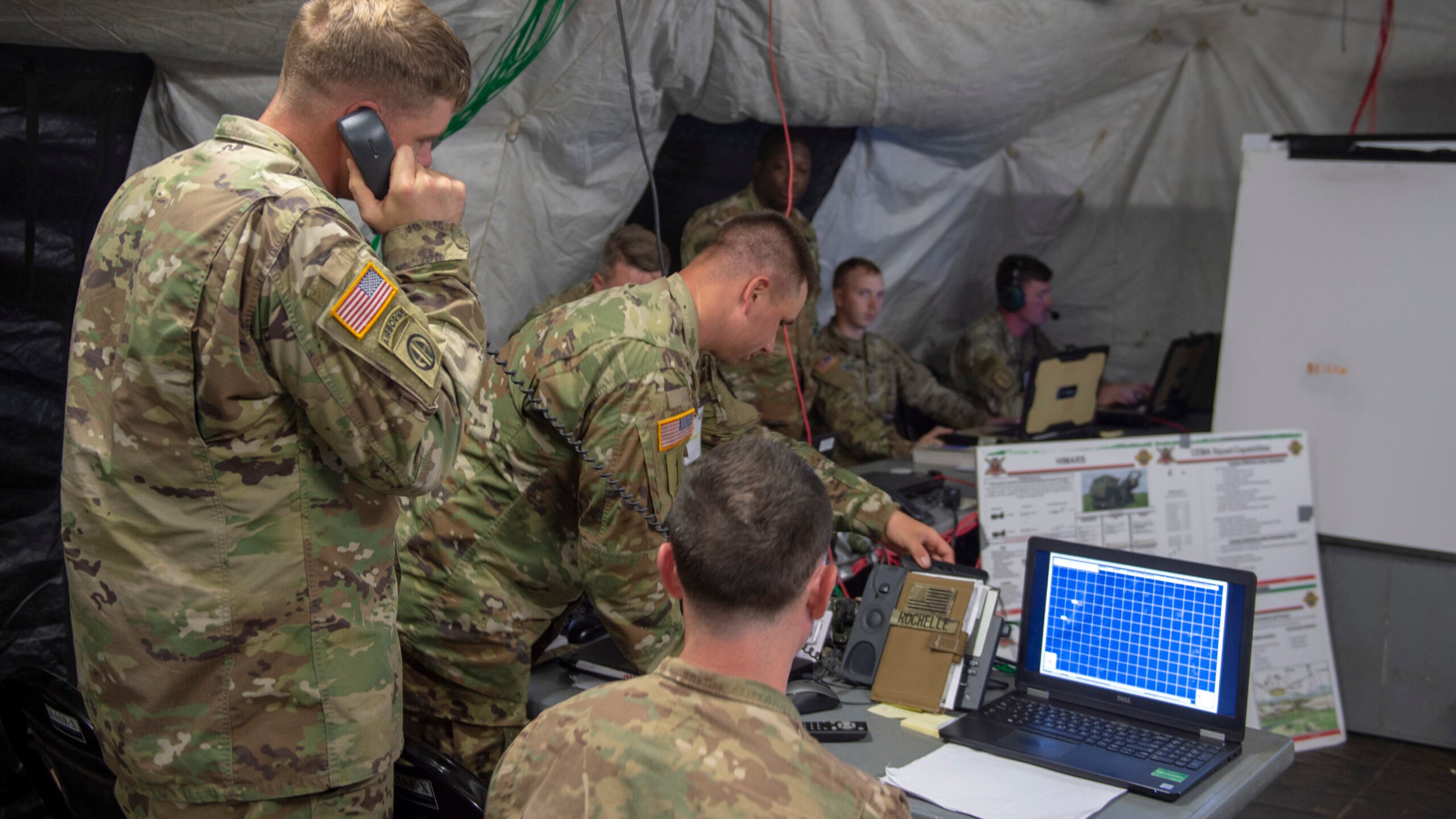
The U.S. Army’s Multi Domain Task Force operates from the Tactical Command Post as a part of their premier appearance at Valiant Shield 2018 Sept. 20, 2018. (Mass Communication Specialist 1st Class Danica M. Sirmans/US Navy)
WASHINGTON: While the Army has hyped its foray into long-range missiles as part of its Pacific strategy, members of Congress expressed concern that the service is missing a critical element: the basing agreements with friendly nations there where the weapons would need to be effectively deployed to deter any Chinese designs on Taiwan.
During a House Armed Services Committee hearing Thursday Rep. Mike Gallagher, R-Wisc., asked Army Chief of Staff Gen. James McConville whether the Army had sufficient basing agreements, only to have McConville defer to policymakers and say that “there’s discussions” ongoing.
Likewise, Army Secretary Christine Wormuth told lawmakers that there is “still conversations and work to be done,” but named Japan and the Philippines as allies the Army believes it has solid relationships with.
The Army leaders said they were wary of discussing potential specific basing locations for the Army’s long-range fires capabilities in the public hearing. Asked if he felt that Army was in where it needed to be to deploy the Multi-Domain Task Force (MDTF) — the service’s new theater-specific units that employ long-range precision effects, including missiles, cyber and electronic warfare capabilities — McConville nodded his head in the affirmative.
“There are possibilities for basing the MDTF, but I also think we have to have a pretty robust diplomatic effort with other countries in the region to try to open up opportunities for basing and access,” Wormuth said, adding that “it’s remarkable” how Japan’s “threat perception has changed in the last few years.”
Gallagher said it was time for a full court press.
“At least in Indo-PACOM, this has to be our top diplomatic priority,” he said. “What we should integrate is the State Department moving heaven and earth to negotiate basing agreements with key allies so that we can deploy teams of Marines or soldiers in order to deny PLA invasion of Taiwan.”
Rep. Elaine Luria, D-Va., followed up on Gallagher’s questions by pressing the two service leaders “from where” in the region the service planned to launch its forthcoming ship-targeting Mid-Range Capability, raising skepticism because the earlier exchange pointed to the fact “there was not any identified basing locations that we [the US military] have access” to, she said.
“I don’t think it would be wise for us to wait to develop the kinds of weapons systems we need for a future conflict until we had the diplomatic agreements signed,” Wormuth said.
Long-range fires are among the Army’s key modernization priorities. The MDTF will be armed with two of the Army’s forthcoming missile capabilities, the Mid-Range Capability missile and Long-Range Hypersonic Weapon. The Mid-Range Capability, McConville told lawmakers today, can fly “about” 1,000 km, while the LRHW has a range of about 2,775 km.
The Army established the first MDTF back in 2017, based out of Joint Base Lewis-McChord. The second MDTF is assigned to Europe, and the third MDTF, which will be officially established this year, will be based in Hawaii.
US Army Pacific, led by Gen. Charles Flynn, is working to forge relationships with countries in the region through an initiative called Pacific Pathways, a series of engagements and exercises with armies across the Indo-Pacific. In an interview with Breaking Defense in April after a five-week trip in the region, Flynn touted the importance of Pathways in developing the relationships the service needs to have in order to operate in the Pacific.
“What we’re trying to have is almost a version of more faces and more places,” Flynn told Breaking Defense last month. “And by having that we’re able to ensure our ability to operate in using ports and using airfields and using training areas.”
Meanwhile, the Marine Corps is also developing precision strike capabilities for its expeditionary advanced base operations concept. That concept is a focus area for the Marines’ new 3rd Littoral Regiment, established to be highly mobile and low-signature, and equipped a ship-sinking missile battery. Rep. Elaine Luria, D-Va., asked the Army leaders if they were working with the Marines to develop some commonality and interoperability in the weapons systems.
Wormuth said that the Army is in “active discussions” with the Marines and sees the Multi-Domain Task Force and Marine Littoral Regiment as “complementary.” Both the LRHW and Mid-Range Capability are being developed in tandem with the Navy. First prototypes of both capabilities are set to be delivered in fiscal 2023.






















